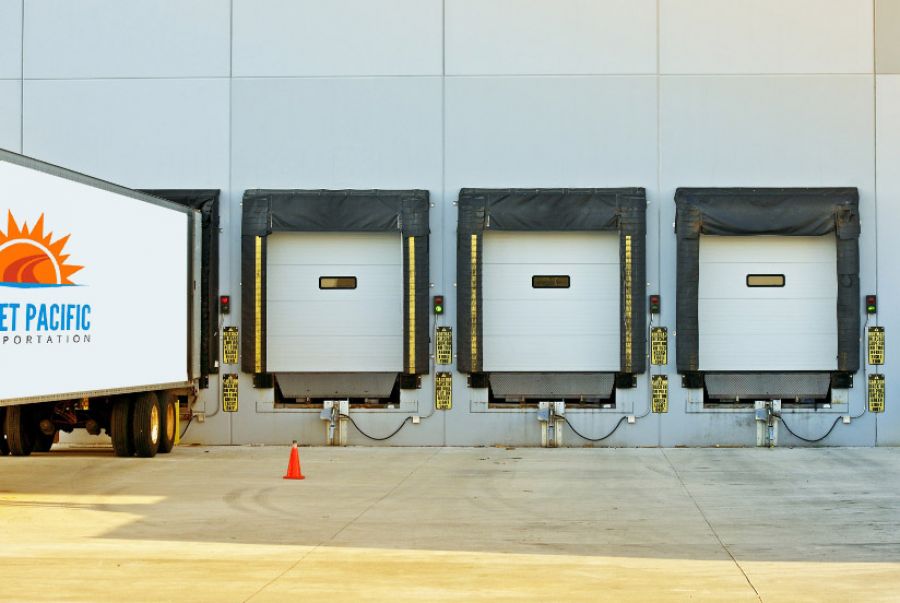Volume LTL Shipping Trends for 2024: What to Watch For

TL;DR: In 2024, Volume LTL shipping will be shaped by trends like technology integration, sustainability efforts, dynamic pricing, last-mile innovations, data-driven decision-making, e-commerce synergy, and regulatory changes. These trends focus on enhancing efficiency, reducing costs, and adapting to market demands, positioning businesses to stay competitive in a rapidly evolving shipping landscape.
Staying updated on shipping trends is crucial for businesses to adapt, optimize logistics, and improve efficiency. Awareness of emerging technologies, market demands, and regulatory shifts enables informed decision-making, cost reduction, and enhanced customer satisfaction. This guide provides insights into seven shipping trends for 2024, positioning businesses to proactively address challenges, maintain competitiveness, and seize opportunities in the dynamic shipping industry.
Trend 1: Technology Integration
Technological advancements in Volume Less Than Truckload (LTL) are revolutionizing the shipping landscape. Automation, IoT, and AI-driven solutions enhance operational efficiency, while advanced tracking systems optimize route planning and reduce transit times. Cloud-based platforms streamline communication, and predictive analytics enable data-driven decision-making, improving load optimization and cost-effectiveness. These innovations contribute to a more agile, transparent, and responsive Volume LTL shipping ecosystem.
Trend 2: Sustainability Initiatives
The shipping industry is undergoing a transformative shift toward sustainability through alternative fuels, electrification, and emission-reduction technologies. Smart shipping, circular economy initiatives, and green port operations demonstrate a commitment to environmental responsibility. Regulatory compliance, sustainability reporting, and increased investment in green technologies contribute to a future where the shipping sector aligns with global efforts to reduce its ecological footprint. Collaborative initiatives signify a collective push toward a more sustainable and environmentally conscious shipping ecosystem.
Trend 3: Dynamic Pricing Models
Evolving pricing models in Volume Less Than Truckload (LTL) signify a departure from traditional structures, moving towards adaptive and transparent approaches. The industry shifts to dynamic pricing, adjusting rates in real-time based on market conditions, demand, and various factors. Density-based, dimensional, and zone-based pricing models accurately reflect shipment characteristics and distances. Negotiated contracts, fuel surcharge adjustments, and collaborative platforms further contribute to customization, addressing fuel cost fluctuations and enhancing transparency. These evolving models aim to align pricing structures with current market dynamics, improve efficiency, and cater to diverse needs in the dynamic Volume LTL landscape.
Trend 4: Last-Mile Innovations
Recent developments in Volume Less Than Truckload (LTL) last-mile delivery focus on efficiency, speed, and customer satisfaction. Integration of advanced technologies like route optimization and real-time tracking streamlines processes, reducing delivery times. Crowdshipping and gig economy platforms provide flexible and cost-effective solutions, leveraging local resources. Sustainable practices, such as electric vehicle adoption, align with environmental consciousness. The last-mile delivery landscape for Volume LTL is evolving with a focus on technological innovation, flexibility, and sustainability.
Trend 5: Data-Driven Decision-Making
Data analytics optimizes Volume Less Than Truckload (LTL) operations, utilizing large supply chain datasets. Advanced tools streamline delivery processes, reduce transit times through route optimization, and enhance visibility with real-time tracking. Predictive analytics aids demand forecasting and efficient resource allocation. Data analytics identifies areas for operational improvement, contributing to cost reduction and optimizing overall supply chain efficiency in Volume LTL. Integration empowers businesses with actionable insights, fostering efficiency, cost-effectiveness, and enhanced decision-making capabilities.
Trend 6: E-commerce Integration
The surge in online retail has significantly propelled the growth of Volume LTL shipping, particularly suited for the high volume of smaller e-commerce shipments. E-commerce’s dynamic nature, marked by fluctuating demand and quick delivery expectations, aligns seamlessly with Volume LTL’s ability to efficiently handle multiple smaller shipments on shared trucks. This strategic alliance is driven by the need for flexible and scalable shipping solutions amid e-commerce’s evolving landscape, emphasizing the cost-effectiveness and agility of Volume LTL in meeting the industry’s demands.
Trend 7: Regulatory Changes
Potential regulatory shifts in Volume Less Than Truckload (LTL) shipping, influenced by environmental standards, safety regulations, and government policies, may significantly impact the industry. Evolving emissions regulations may drive a shift toward greener practices, adopting eco-friendly technologies and electric vehicles in the Volume LTL sector. Safety standards, responding to emerging technologies like autonomous vehicles, may undergo updates for secure integration. Changes in trade policies and geopolitical dynamics can influence cross-border transportation regulations, shaping the global operations of Volume LTL. Adapting proactively to these potential regulatory shifts is crucial for businesses to maintain compliance within this evolving landscape.
Conclusion
In Volume Less Than Truckload (LTL) shipping for 2024, key trends respond to industry demands:
Technological Integration: Advanced technologies like route optimization and real-time tracking enhance efficiency and visibility.
Sustainability Initiatives: Increased emphasis on eco-friendly technologies aligns with environmental consciousness.
Dynamic Pricing Models: Adoption of dynamic pricing responds to market conditions, demand fluctuations, and factors like density, dimensional pricing, and zone-based pricing.
Last-Mile Innovation: Advancements in last-mile delivery improve overall logistics operations.
Data-Driven Decision-Making: Businesses leverage technology, sustainability, and regulatory compliance for proactive and adaptable responses to industry trends.
E-commerce Synergy: Continued growth and collaboration with the e-commerce boom for flexible and scalable solutions.
Regulatory Dynamics: Potential shifts in regulations influenced by environmental standards, safety measures, and government policies impact industry practices and operations.
Get the an instant Volume LTL freight quote or learn more about Sunset Pacific Transportation’s Volume LTL services.









